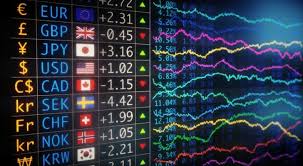
Forex trading, or foreign exchange trading, is the process of exchanging one currency for another on the global market. It operates through a decentralized market, allowing traders to buy, sell, and exchange currencies at current or determined prices. For those seeking to delve deeper into the world of Forex trading, resources like forex trading explained FX Trading UZ can provide valuable insights and tools. This article aims to demystify the basics of Forex trading, outline its dynamics, and provide practical tips for both beginners and experienced traders alike.
What is Forex Trading?
Forex trading is the act of speculating on currency price movements with the aim of making a profit. Currencies are traded in pairs, with the value of one currency compared to another. For instance, in the EUR/USD pair, you could speculate whether the Euro will strengthen against the US Dollar or vice versa.
The Structure of the Forex Market
The Forex market is the largest and most liquid financial market in the world, with a daily trading volume exceeding $6 trillion. It operates 24 hours a day, five days a week, providing traders with ample opportunities to engage at any time. The market is decentralized, meaning there is no central exchange; instead, trading occurs over-the-counter (OTC) among various financial institutions and individual traders.
Currency Pairs
Currencies are quoted in pairs, consisting of a base currency and a quote currency. The price indicates how much of the quote currency is required to purchase one unit of the base currency. For example, if the EUR/USD pair is quoted at 1.20, it means that 1 Euro is equivalent to 1.20 US Dollars.
There are three main types of currency pairs:
- Major pairs: The most traded pairs, including EUR/USD, USD/JPY, and GBP/USD.
- Minor pairs: Less traded pairs that do not include the US Dollar, such as EUR/GBP or AUD/CHF.
- Exotic pairs: Paired combinations of major currencies with those from smaller, emerging economies such as USD/TRY (US Dollar to Turkish Lira).
The Role of Brokers
To participate in Forex trading, individuals typically work through brokers or financial institutions. Brokers provide trading platforms, leverage, and access to market liquidity. Selecting a reputable broker is crucial for security, fees, and the quality of customer support. Traders should look for brokers that are regulated by financial authorities in their jurisdictions to ensure transparency and reliability.

Understanding Leverage
Leverage is a powerful tool in Forex trading. It allows traders to control a larger position with a smaller amount of capital. For instance, if a broker offers a leverage ratio of 100:1, a trader can control a $100,000 position by investing just $1,000. While leverage can amplify profits, it also increases the potential for losses, making it essential for traders to manage their risk effectively.
Fundamental and Technical Analysis
Successful Forex trading relies heavily on analysis, which can generally be split into two categories: fundamental analysis and technical analysis.
Fundamental Analysis
This involves examining economic indicators, news events, and geopolitical developments that can influence currency movements. Farmers must monitor various reports, such as employment numbers, inflation rates, and interest rates, to anticipate market trends and changes in currency values.
Technical Analysis
Technical analysis focuses on analyzing price patterns and statistical data to forecast future price movements. Traders utilize charts, indicators, and historical price data to make informed decisions. Common tools include moving averages, relative strength index (RSI), and Fibonacci retracements.
Trading Strategies
There are numerous strategies traders can employ in Forex trading, each suitable for different objectives and risk tolerances.
Scalping

This involves making numerous trades throughout the day to capture small price movements. Scalpers often hold positions for a few seconds to minutes.
Day Trading
Day traders enter and exit positions within the same trading day. They aim to profit from short-term market movements and typically avoid holding positions overnight.
Swing Trading
Swing traders hold positions for several days or weeks in an attempt to capitalize on anticipated price moves during this time frame. They often rely on both technical and fundamental analysis.
Position Trading
Position traders take a long-term approach, holding positions for months or even years. They typically base their strategies on fundamental analyses and broader economic trends.
Risk Management
Risk management is a critical component of successful Forex trading. Traders should implement strategies to protect their capital, such as setting stop-loss orders, diversifying their portfolios, and adhering to risk-reward ratios. It is recommended that traders risk no more than 1-2% of their total capital on a single trade to mitigate the potential for significant losses.
Conclusion
Forex trading provides opportunities for profit in a dynamic and evolving market. By understanding the fundamentals of the market, utilizing proper analysis techniques, implementing effective trading strategies, and practicing solid risk management, traders can enhance their chances of success. As the Forex market continues to grow, educational resources like FX Trading UZ offer vital support for traders at all levels, ensuring they are equipped with the necessary knowledge and tools to navigate this complex landscape.

COMMENTAIRES